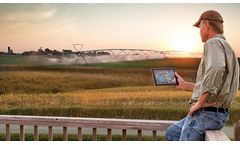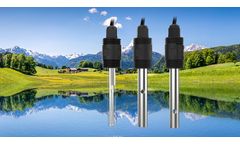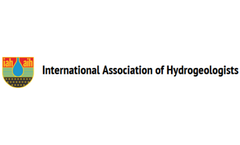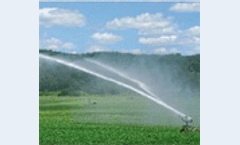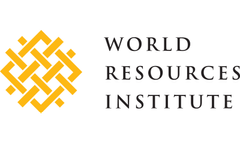Agriculture Water Use Articles & Analysis
18 articles found
Zimmatic Controllers – The Only Control Panel Compatible with Fieldnet Control panels have always been used on pivot sprinklers. New smart control panels, however, are revolutionizing pivot irrigation. These devices reduce water consumption and lead to savings in time and labour. Zimmatic control panels have everything for the grower who is ready to take complete control of their ...
This article explores how water quality sensors have revolutionized agricultural water management, enabling farmers to enhance water-use efficiency, crop yield, and quality while minimizing environmental impacts. Optimizing Agricultural Water Management through ...
Constructing a reasonable evaluation index system is important for characterizing water and land resources and for ecological restoration. To solve random and incomplete problems using a traditional evaluation index system, a novel model for evaluating regional agricultural water resources using a resilience ...
The analysis showed that overall agricultural water use in China decreases as the processes of urbanization and industrialization proceed. Agricultural water use has decreased in the Huang-Huai-Hai and northwest regions because both have experienced water resource shortages. The ...
Unsustainable groundwater use for food production intensifies the impacts of climate change, and cost-effective adaptation responses are needed to better equip vulnerable agricultural regions. Groundwater is the main source of water supply for many farmers in the Province, often using inefficient and outdated irrigation ...
Worldwide, water scarcity threatens delivery of water to urban centers. Increasing water use efficiency (WUE) is often recommended to reduce water demand, especially in water-scarce areas. In this paper, agricultural water use efficiency ...
There is a close quality relationship between the harmful levels of all three drought indicator groups (meteorological, hydrological and agricultural). However, the numerical scale of the relationships between them is unclear and the conversion of indicators is unsolved. ...
The Piranhas-Açú and Jaguaribe basins will become the largest recipients of these water deliveries. In this paper, we propose methodologies to state in monetary terms the technical coefficients of water use for the economic sectors associated with urban supply (US) and agricultural irrigation (AI) in different ...
Catastrophic events require rapid, scientifically sound decision‐making to mitigate impacts on human welfareandthe environment. The objective of this study was to analyze potential impacts of coal‐ash‐derived trace elements on agriculture following a 35,000‐tonne release of coal ash into the Dan River at the Duke Energy Steam Station in Eden, NC. We performed scenario calculations to assess ...
Estimates suggest that by 2050, agricultural water use will exceed what can be replenished. [10] Similarly, climate change impacts — such as rising temperatures, floods and droughts — are expected to be worst in food insecure regions such as Sub-Saharan Africa and South Asia, with the World Bank predicting decreases in crop yields of ...
An integrated System Dynamics Model for the water-stressed Rosetta region, Egypt, assessing water balance, and agricultural yield and revenue to 2050, is presented. The study uses 57 simulations to better understand impacts on water, food and economic security and their interactions, in order to highlight ...
In line with the Bank-aided Sierra water resource management modernization project and the Formalization of Water Rights and Extension to the National Water Registry (PROFODUA), an Impact Evaluation study was proposed by the World Bank and its Peruvian counterparts in order to develop a rigorous evaluation of the impact of the program of ...
Irrigated agriculture is the most significant user of fresh water in the world and, due to the large area occupied, is one of the major pollution sources for the water resources. This book comprises 12 chapters that cover different issues and problematics of irrigated agriculture: from water use ...
Two options open to all countries are improving the productivity of water in agriculture and importing virtual water in food. For some, the additional options of bringing more land into production or harvesting rainwater may also be available. All these measures reallocate water to agricultural ...
Surveys of relic canals at the Oasis of Otrar in Kazakhstan have been used to re-construct patterns of agricultural water use for irrigation between AD700 and AD1500. Hydraulic simulation software was used to calculate the water carrying capacity of historical irrigation canal networks. An ...
In addition, agricultural water use is unevenly spread. In some southern European regions, agriculture accounts for more than 80 % of water abstraction. ...
Agriculture is by far the biggest water user, accounting for more than 70% of global withdrawals. ...
The Sacramento-San Joaquin Delta is a critical resource. Almost half of the water used for California’s agriculture comes from rivers that once flowed to the Delta and more than half of Californians rely on water conveyed through the Delta for at least some of their water supply. ...

